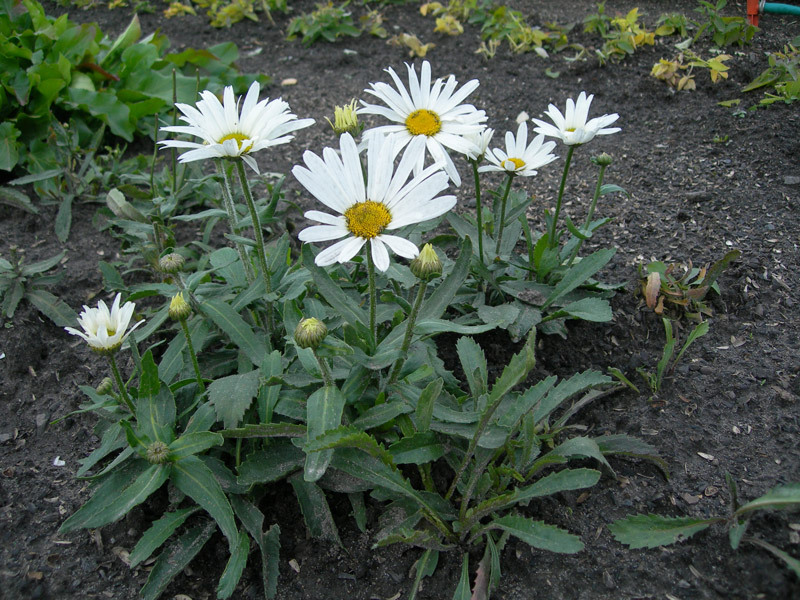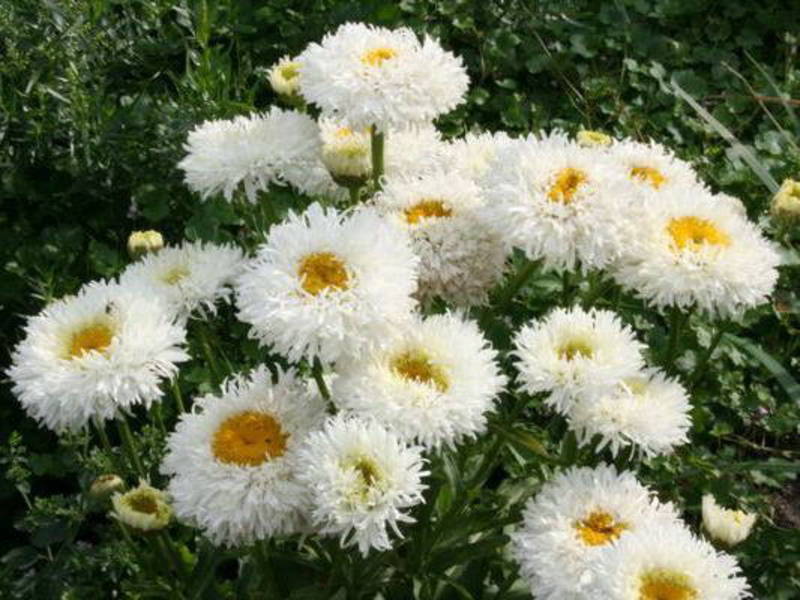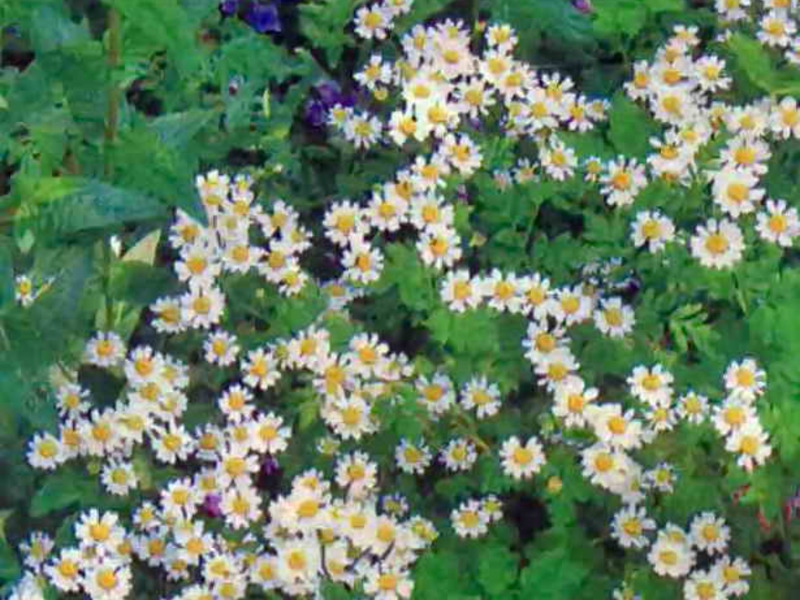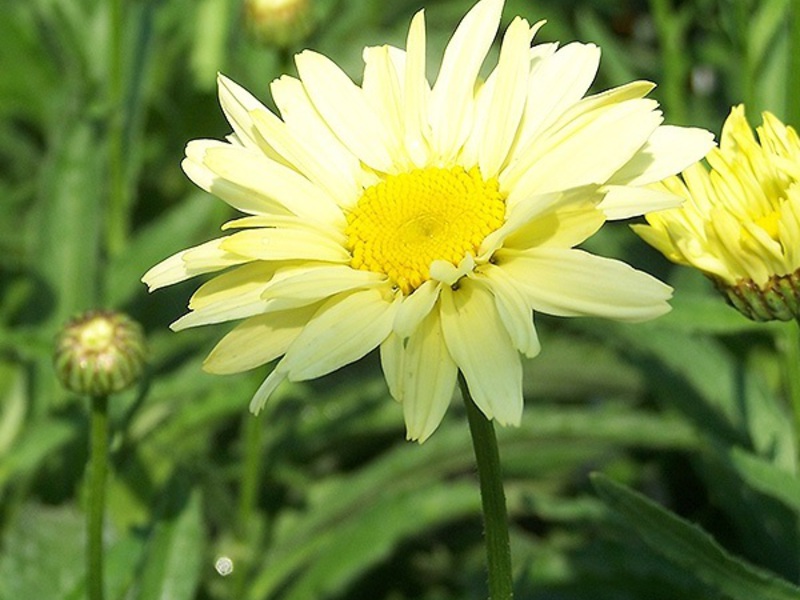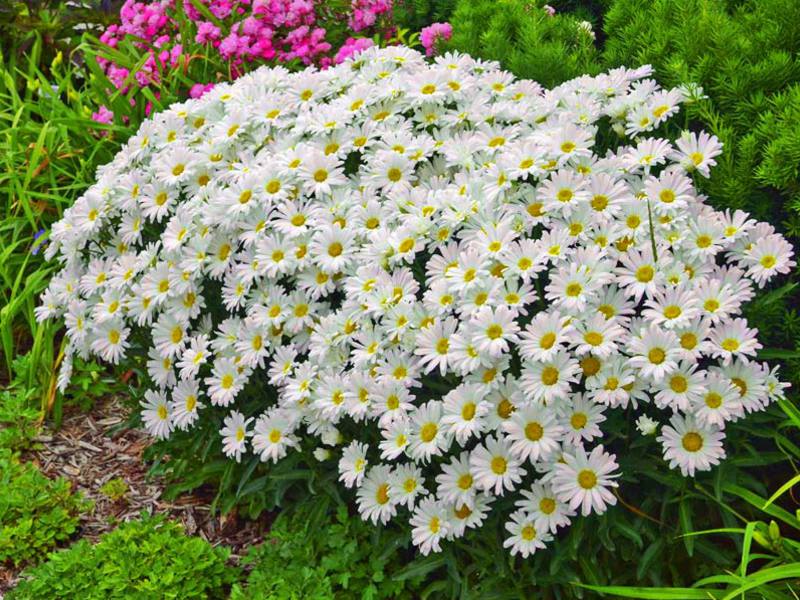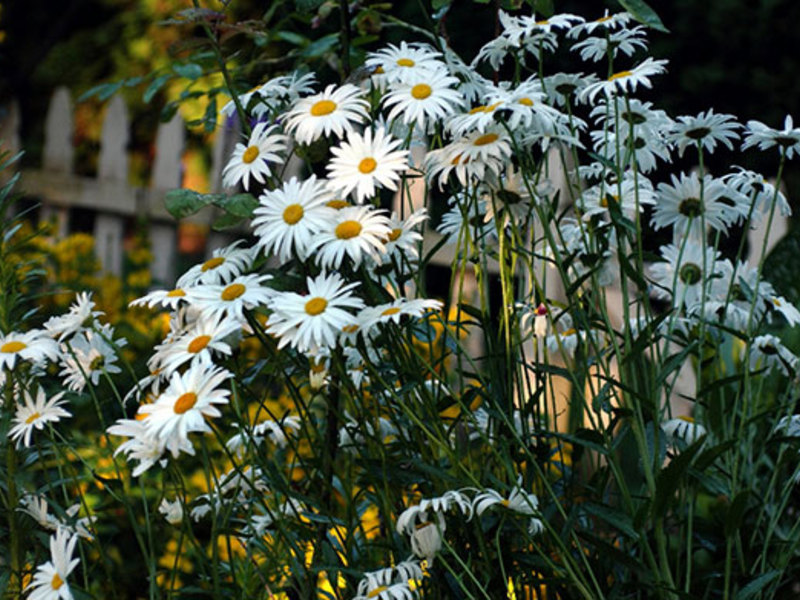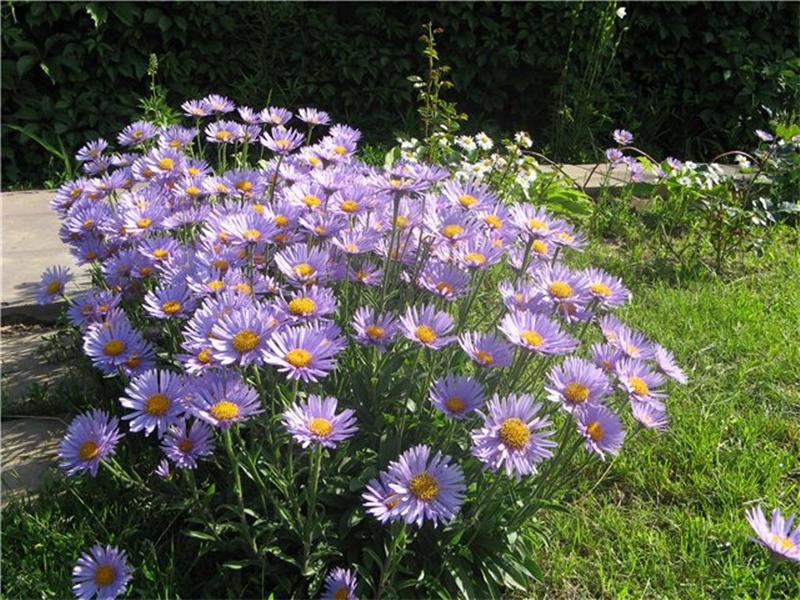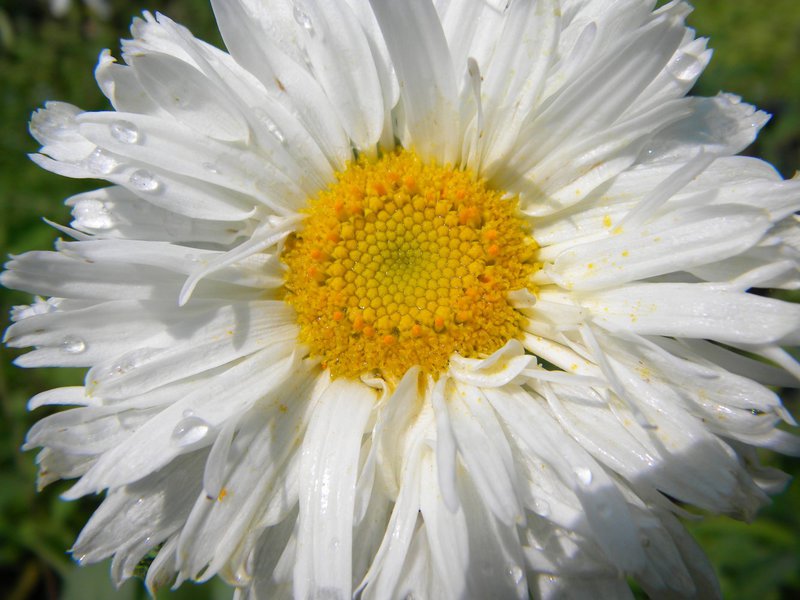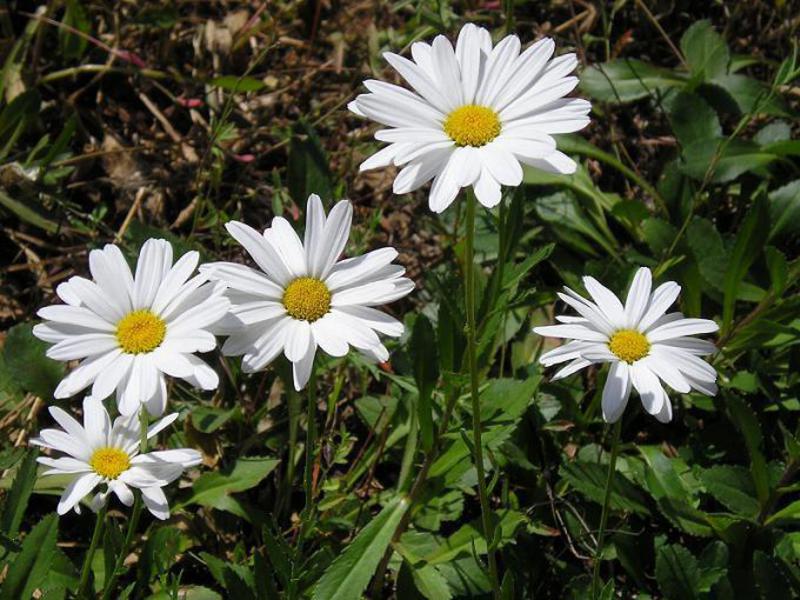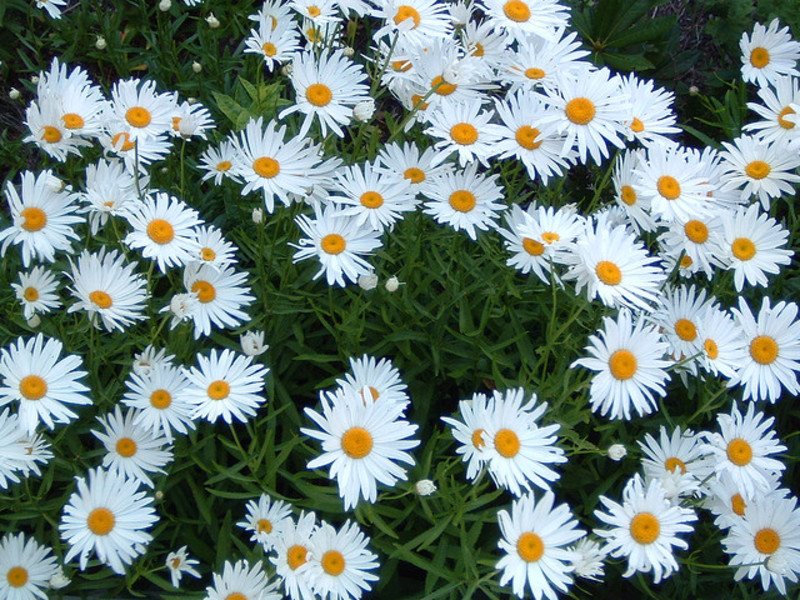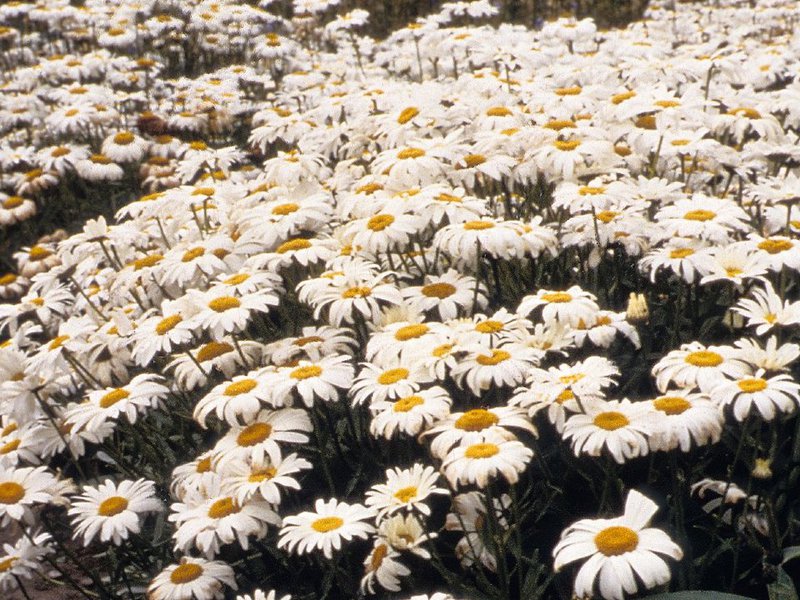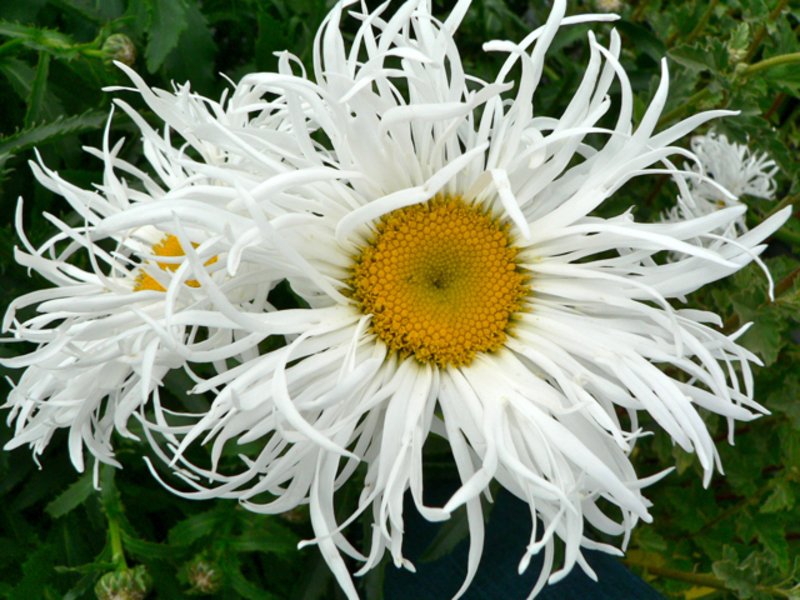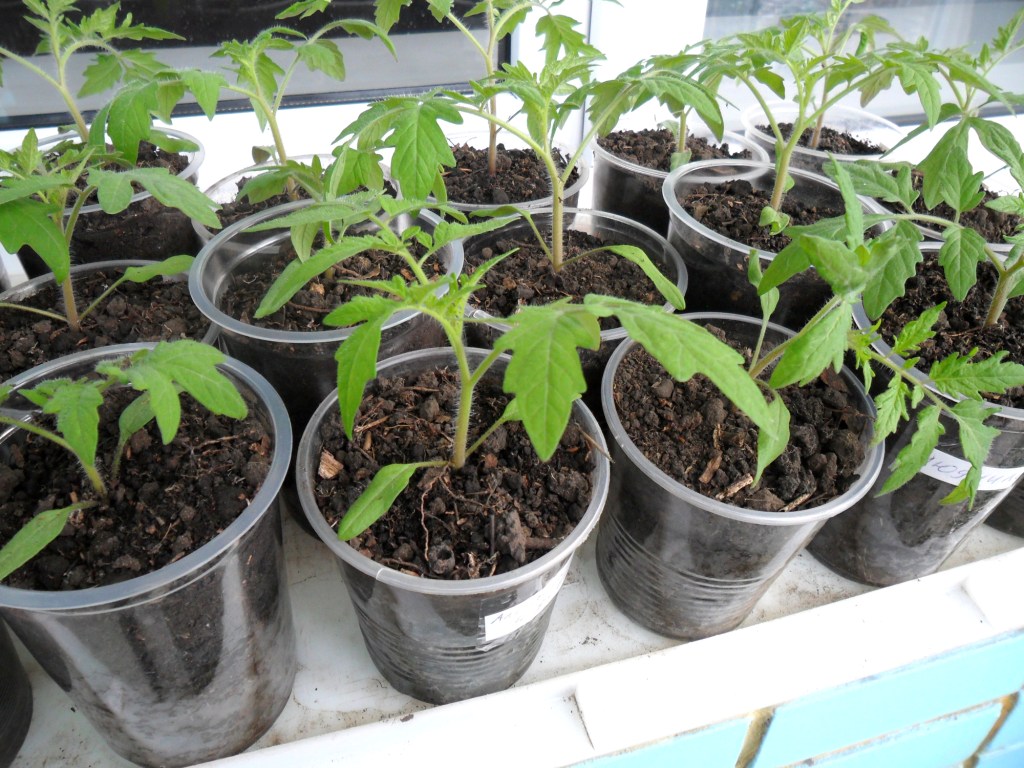Even novice gardeners know what a daisy looks like, whose middle name is garden chamomile. The plant is very popular for its simplicity, charm and long flowering. Depending on the variety, nivyaniki can have simple, double or semi-double inflorescences. They are unpretentious to the place of planting and care. Growing them from seeds is not difficult, but it has its own characteristics.
Description, varieties and photos of nivyaniks
A perennial herb belongs to the Aster family. Its height depends on the species. In nature, garden chamomile grows from 30 cm to 1 m... Breeders have bred hybrid species, the height of which reaches 130 cm.
The cornflower is distinguished by red rhizomes, erect stems, and serrated or lobed leaves. Depending on the species, the leaves can be radical or located along the stem. At the top of each stalk, inflorescences are formed in the form of single baskets. Garden chamomile flowers mainly consist of white petals and a yellow center.
The plant blooms twice per season. The first bloom begins in May and lasts until July. The second time the daisy pleases with its flowering in August-September. In autumn, fruits with seeds are formed on the bushes. They can be with or without a one-sided crown.
Popular types of nivyanik
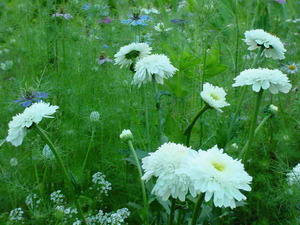 When choosing flowers for your garden plot, it is recommended that you first study their main characteristics.
When choosing flowers for your garden plot, it is recommended that you first study their main characteristics.
Daisy... A widespread meadow plant is distinguished by an unbranched stem with a height of 60 to 90 cm. From a creeping rhizome, shoots form sideways, as a result of which a bush can grow up to 30 cm in diameter. The dark green leaves are obovate and jagged. The upper ones are located along the stem and are slightly shorter than the lower ones.
The flowers of the common daisy consist of about twenty radial-shaped petals and a yellow head with a diameter of 5 cm. Flowering begins in late spring and continues until autumn. Faded buds form a huge number of flat seeds without a tuft. They will be suitable for sowing for two to three years. This species prefers moist soils, and can grow in both sun and shade.
Nivyanik largest... The second name of this type of plant is “big chrysanthemum”. The largest is a rhizome plant up to 70 cm high. It is distinguished by large leaves with jagged edges and large single inflorescences. The flowers consist of a yellow disc around which a large number of radial-shaped petals are collected. Most often, the following varieties of common daisy are used to decorate the garden:
- The Alaska cultivar is a plant with white flowers about 10 cm in diameter. The variety is resistant to temperature extremes, therefore it is suitable for planting in the gardens of central Russia.
- The Aglaya variety is a bush with white flowers, the upper petals of which are oval and the lower ones are more needle-like.
- The Crazy Daisy variety grows up to 90 cm in height and is distinguished by magnificent double inflorescences and shiny green leaves. A large number of petals are located on one inflorescence, which gives it a terry shape.Flowering occurs in June-July. Gardeners love to use this variety for various compositions.
Nivyanik kuril... The low-growing plant reaches a height of only 15 cm. On its stems, fleshy petals and large flowers with a diameter of 8 cm are formed. It is widely used for decorating alpine slides.
Alpine daisy... A low-growing plant 15-30 cm high is decorated with delicate flowers with white petals. The type is often used to decorate curbs, rockeries, alpine slides. Grows well in damp areas.
Nivyanik marsh... A bushy, low-growing plant reaches a height of 25-30 cm. Each shoot forms small white inflorescences with a diameter of 3 cm. The species is unpretentious in care and resistant to frost.
Nivyanik: growing from seeds
You can propagate garden chamomile from seeds immediately in the open field or through seedlings.
Sowing in open ground
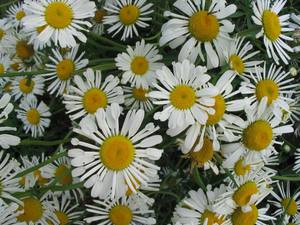 Seed-planted cornflowers will bloom only the next season. In the first year, their root system will develop, and a bush will form. Sowing is done in spring or autumn.
Seed-planted cornflowers will bloom only the next season. In the first year, their root system will develop, and a bush will form. Sowing is done in spring or autumn.
Having chosen a place suitable for growing a cornflower, it is necessary to dig up the beds and make grooves on them with a distance of 20 cm from each other. The planting material is sealed to a depth of two centimeters and covered with soil. The soil spills well.
Spring sown seeds will rise in about three weeks... Garden chamomile seedlings grow slowly, therefore, only by the end of summer, seedlings are formed, which will need to be cut down. This must be done before the onset of cold weather, so that young plants have time to take root and grow stronger.
Seedlings are transplanted into holes with dimensions of 30x30 cm. Each hole is fertilized with 300 g of humus or compost and 20 g of complex mineral fertilizer. A young plant is dug out together with a clod of earth, planted in a new place and watered well. The soil around the bushes is mulched with sawdust. After about two weeks, the seedlings are watered with a special solution, which is prepared from 20 g of saltpeter and a bucket of water.
Seeds sown in autumn will germinate only next spring. Seedlings are planted in a permanent place in May.
Growing seedlings at home
With the seedling method of growingdaisy blooms in the first season... Sowing is done in late winter - early spring. For seedling containers, you can take flat bowls, small cups, boxes or cassettes. They should not be very deep, so that it is easier to regulate soil moisture.
Garden chamomile seedlings are grown according to the following rules:
- The seedling containers are filled with seedling potting soil, which can be obtained from your specialist store.
- The earthen mixture is spilled with a solution of potassium permanganate and leveled.
- Seeds are planted to a depth of 1 cm, sprinkled with a small layer of earth and moistened with a spray bottle with water at room temperature.
- Seeds should germinate at a temperature of + 22C. The boxes can not be covered with a film on top, you just need to make sure that the soil does not dry out.
- As soon as the first seedlings emerge, the seedling containers are placed in a well-lit and cooler place.
- When 2-3 true leaves appear, the seedlings dive into separate pots.
- Humus is added to the earthen mixture for transplanting seedlings.
Grown and matured young plants in open ground land in May.
Care features
 Nivyany like well-lit, ventilated areas. In partial shade, they will also grow and bloom, but their stems will begin to bend.
Nivyany like well-lit, ventilated areas. In partial shade, they will also grow and bloom, but their stems will begin to bend.
The soil for growing garden chamomile should be fertile, well-drained and soft. The plant needs to be watered regularly, especially after hot summer days. Constant dryness of the soil leads to the rapid wilting of flowers and aging of the plant. However, the nursery does not need excess moisture. On poorly drained soils and with stagnant water in the plant roots start to rot firstand then the stem.
Twice a month, garden chamomile is fed with nitrophos. At the beginning of active growth, nitrogen should prevail in the top dressing, and during the formation of buds, potassium must be included in the mineral fertilizer. If it is possible to feed the plant with a mullein solution, then it will not need mineral fertilizers.
Regular weeding, loosening of the soil and removal of wilted buds will help to get a beautiful and long flowering of the daisy plain, semi-double or double flowers.
Nivanny flowers can add charm to any garden. They will look equally great both with decorative deciduous plants and with flowering crops. With proper placement and care, garden chamomile will be thanked with chic flowering until autumn.

